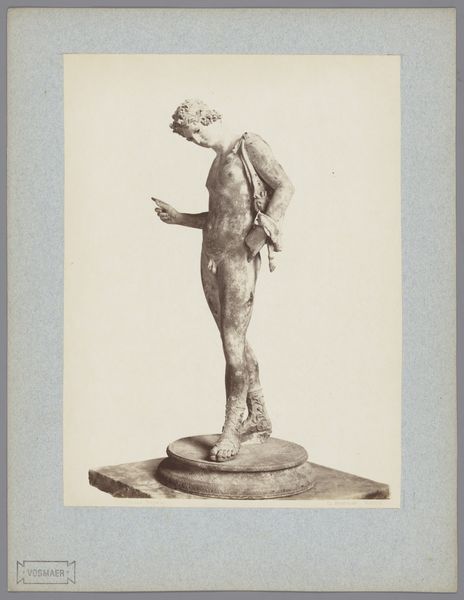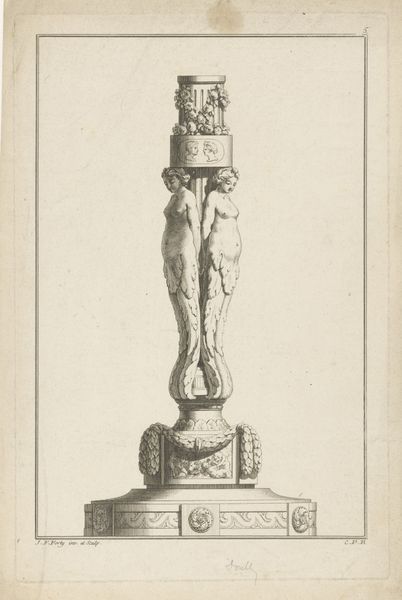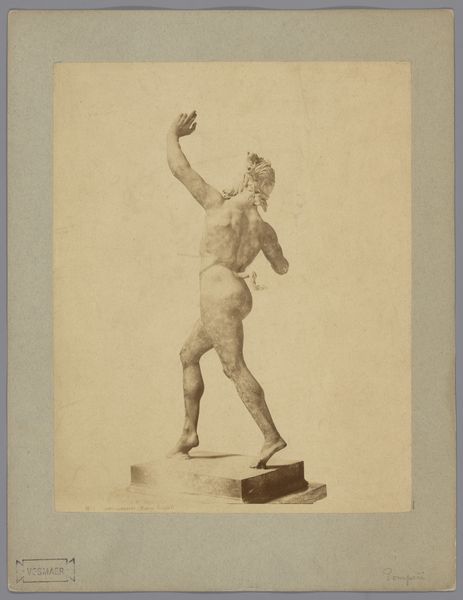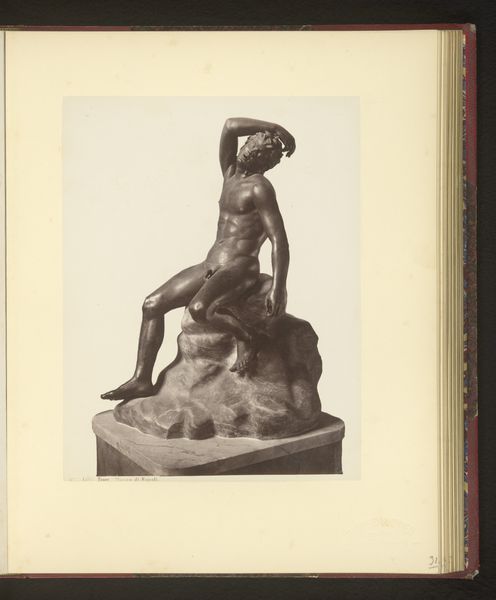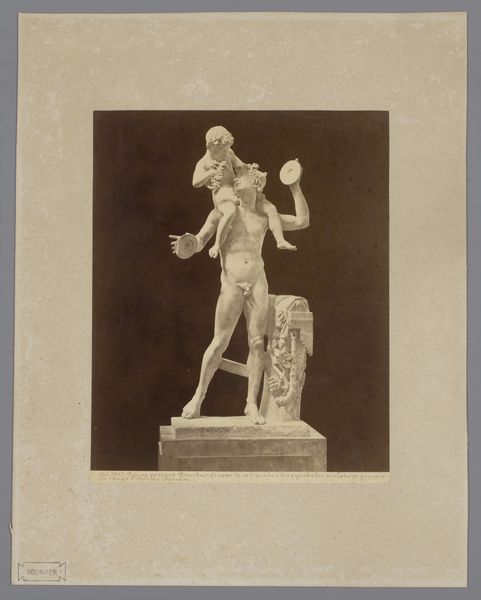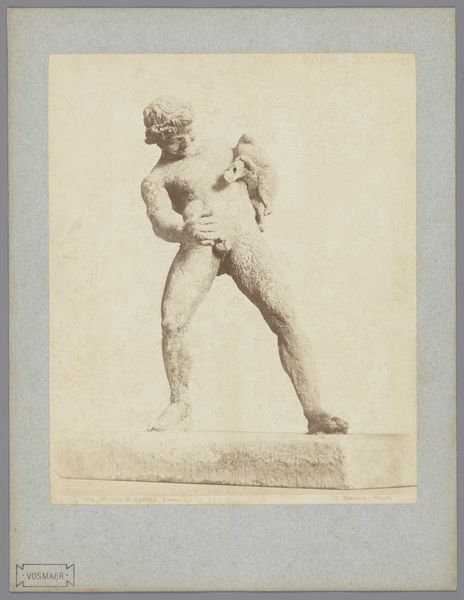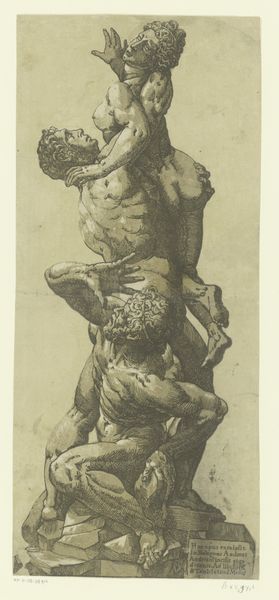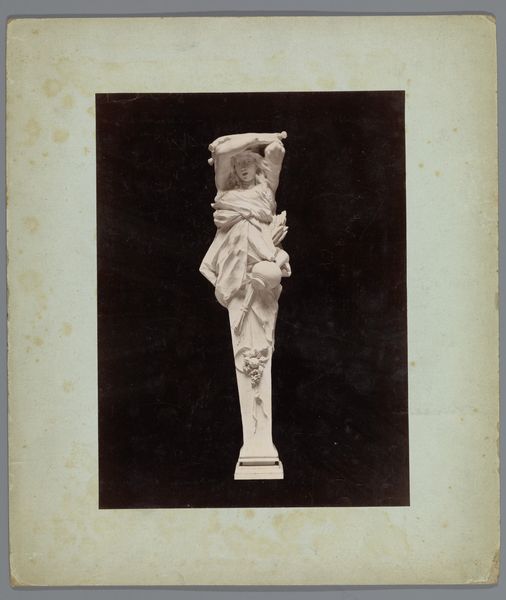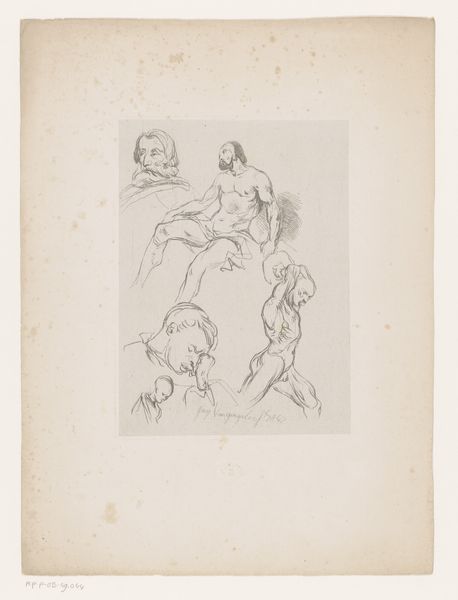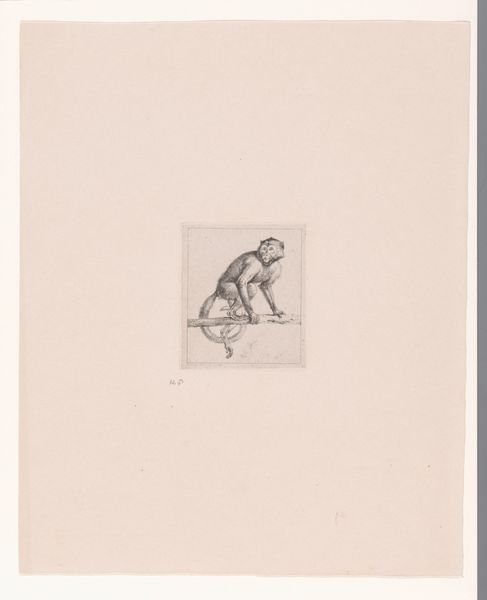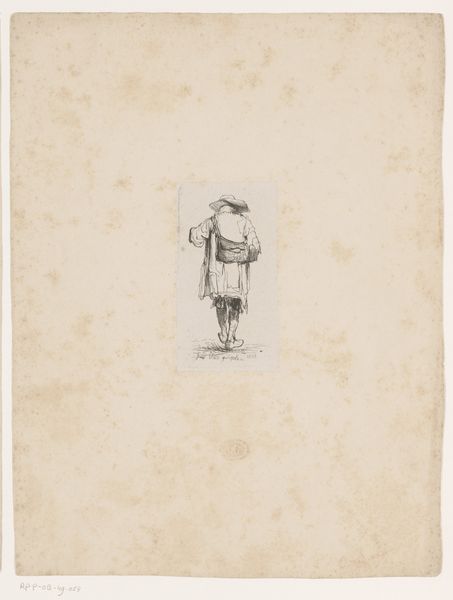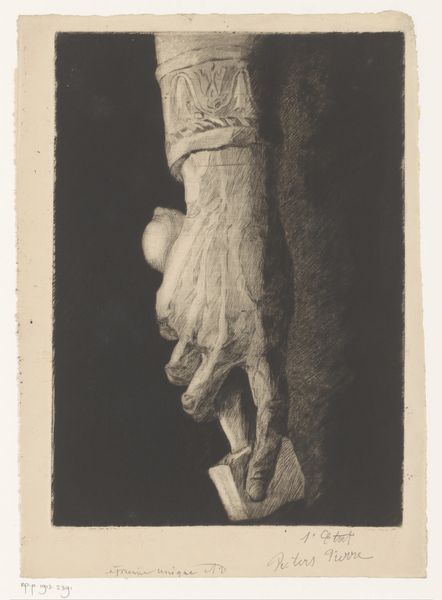
Ontwerp voor sculptuur van Perseus door Benvenuto Cellini in het Museo Nazionale te Florence, Italië 1857 - 1900
0:00
0:00
fratellialinari
Rijksmuseum
etching, photography, sculpture, gelatin-silver-print
#
portrait
#
etching
#
classical-realism
#
photography
#
sculpture
#
gelatin-silver-print
#
history-painting
Dimensions: height 249 mm, width 192 mm, height 356 mm, width 255 mm
Copyright: Rijks Museum: Open Domain
This photograph by Fratelli Alinari captures Benvenuto Cellini's sculpture of Perseus, located in the Museo Nazionale in Florence. The sculpture presents a potent image of triumph, with Perseus standing over the slain body of Medusa, her severed head held aloft. Made in 16th-century Florence, Cellini's sculpture reflects the values of the Renaissance, particularly the celebration of human achievement. This wasn't just art for art's sake; it was a political statement. Commissioned by the Medici family, the sculpture served to legitimize their power and present them as heroic figures. The choice of Perseus, a figure from classical mythology, added to the sculpture's grandeur and reinforced the Medici's association with classical virtues. Understanding the art of the past requires looking into historical sources such as letters and municipal records. Only then we can grasp the ways in which art embodies political ambitions, social hierarchies, and cultural values.
Comments
No comments
Be the first to comment and join the conversation on the ultimate creative platform.
